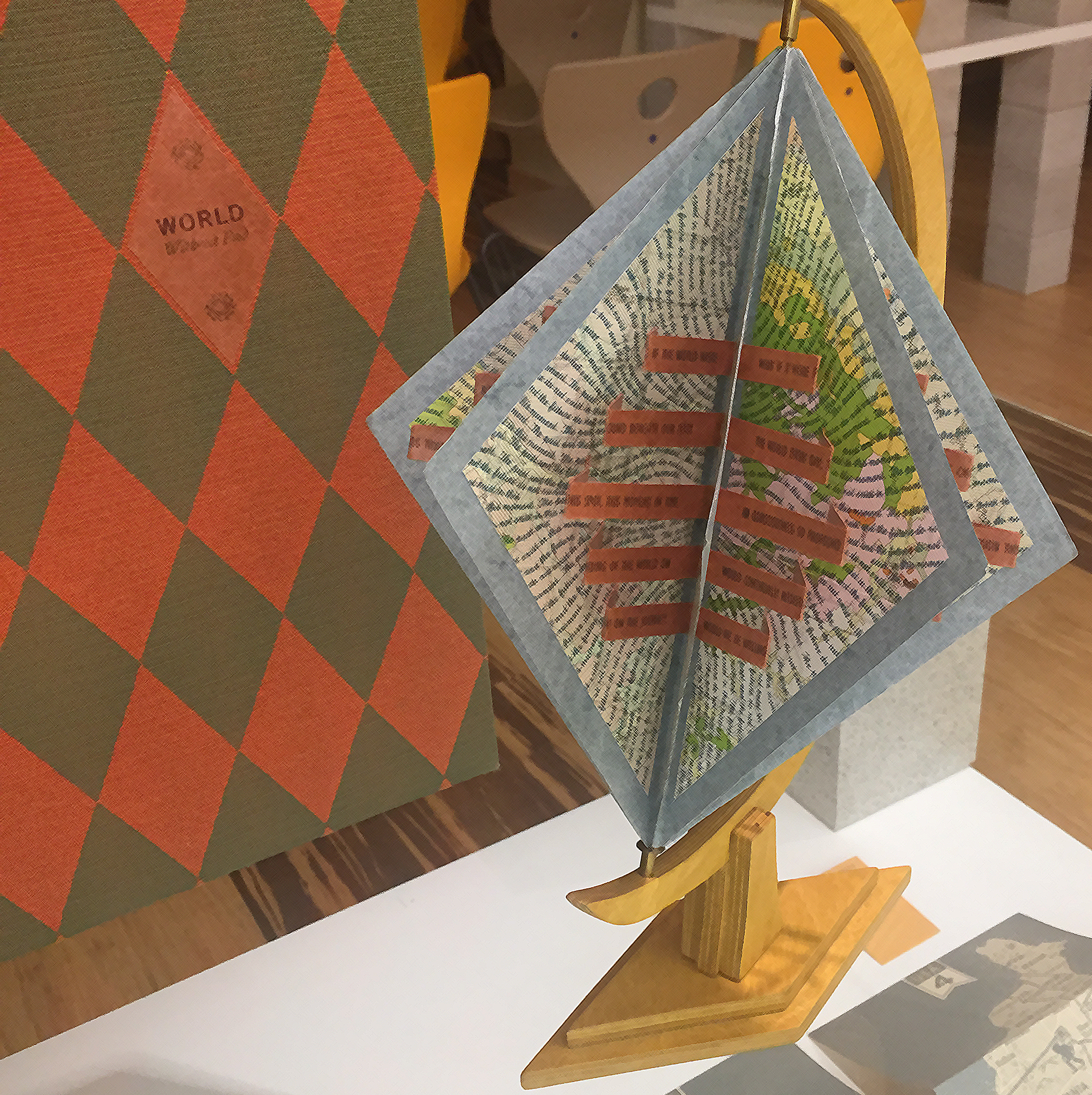Books as Aesthetic Objects

by Andrew Binder
2007
Growing up, Andrew Binder was fascinated with icons of Thai temple rubbings—not your typical childhood passion. The Khmer Legacy, arguably Binder’s finest work to date, is a three-dimensional journey that traces and reinterprets the origins of far eastern iconography and myth, resulting in a handsome, grand-scale, popup-form book. After four years of travel, study, and paper engineering to complete this one-of-a-kind project, the artist’s discovery process has come full circle from his interests as a child to a mature book artist.
The source material for The Khmer Legacy ranges from Cambodian temple rubbings to original photographs of architecture, sculpture, and paintings in Bangkok, Ayutthaya, and Khajaro. The main “story” of the work is loosely based on the Ramakien of Khmer/Tai/Indian mythology, although the artist advises the reader to avoid assuming allegory or reading linearly into the work.
In fact, “reading” isn’t exactly the right verb when looking at this book. “Experience” is more like it. Weighing in at nearly ten pounds, and with a span of two feet when opened, this hefty work requires a solid coffee table underneath it. Both sides of each cardboard page are covered with card stock, and some of the pop-ups rise nearly two feet from the table’s surface.
The book’s perimeter shape is a geometrically irregular, harkening a temple floor plan, or is an ancient tile pattern? Left-hand bound and measuring 3.25 inches thick, the book’s front cover doesn’t differ much from a page design. The book is held closed by a thin, leather loop that clasps over a spot-burned wooden button, and is adhesive bound in concertina-like style.
The first and last page spreads are pastel-hued, abstracted maps surrounding the route of Ramayana and Ramakien. Once inside, each spread varies in style and layout, yet hold together with a handful of common imagery, and a flair for the unexpected. Each spread, as well as the covers, is boldly bordered with a thick dashed line, like the graphic indication of a trail on a hiking map. Or does the border denote the boundaries of the ground the page covers?
The artist toys with the viewer’s experience by tweaking scale and dimension at the turn of every page. For example, in several spreads, giant birds swoop over miniature human forms, while on other spreads, towering saffron-robed monks tower over site-specific, historically accurate, miniature (really gigantic) ruins. Some spreads are meant to be seen facing front, while others require the book to be swiveled 45 degrees, sometimes 90. As well, if the viewer drops their eye level, temple passages reveal inner sanctum golden Buddhas.
While the book is constructed with strong and ink on paper—and there is no text or prose to follow—the visual metaphors for silk, stone, and water are so strong, one might fantasize as to where they are on the planet, and in what century.
- Judith Klau